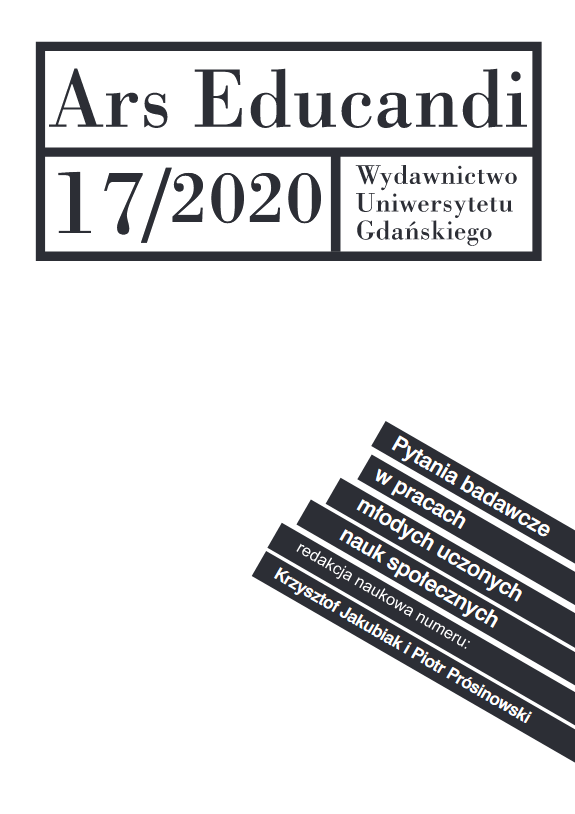Pedagogika cyrku - jako metoda pracy z uczniem niedostosowanym społecznie
DOI:
https://doi.org/10.26881/ae.2020.17.05Słowa kluczowe:
circus pedagogy, social maladjustmentsAbstrakt
Prezentowany artykuł jest próbą podsumowania autorskiego, innowacyjnego programu pracy metodą pedagogiki cyrku z uczniami niedostosowanymi społecznie oraz zaburzeniami zachowania i emocji, realizowanego przez autorkę od 10 lat w Szkole Podstawowej nr 1 w Różanymstoku. Szkoła Podstawowa Specjalna Nr 1 w Różanymstoku wchodzi w skład Salezjańskiego Ośrodka Wychowawczego im. Św. Jana Bosko w Różanymstoku i przeznaczona jest dla uczniów niedostosowanych społecznie, do której przyjmowani są chłopcy, wobec których właściwy Sąd Rodzinny do spraw Nieletnich orzekł zastosowanie środka wychowawczego w postaci umieszczenia w placówce resocjalizacyjnej. Struktura organizacyjna szkoły obejmuje klasy V-VIII. W niniejszym artykule prezentuję opracowany program oraz analizuję pojawiające się problemy i możliwości jego realizacji w wybranej instytucji jako efekt badania w działaniu.
Downloads
Bibliografia
1. Greenwood D. J., 2012, Action research, czyli o badaniach w działaniu, [w:] Jemielniak D. (red.), Badania jakościowe. Podejścia i teoria, t. 1, Warszawa: Wydawnictwo Naukowe PWN
2. Kalinowska M., Urban M., 2017, Pedagogika cyrku w Polsce: obszary, cele, praktycy, [w:] Cyrk w świecie widowisk, Kondrasiuk G. (red), Warsztaty Kultury w Lublinie, Lublin (s.265-276)
3. Konopczyński M., 2008, Metody twórczej resocjalizacji, Warszawa: Wydawnictwo Naukowe PWN
4. Konopczyński M., 2014, W stronę działań kreujących, Kraków: Impuls
5. Pytka L., 2005, Pedagogika resocjalizacyjna, Warszawa: Wydawnictwo Akademii Pedagogiki Specjalnej
6. Roth G., 2011, Bildung braucht Personlichkeit. Wie lern gelingt, Stuttgard
7. Szurawski M, 2004, Pamięć. Trening interaktywny, Łódź: Wydawnictwo Ravi
8. Urban B., 2008, Zaburzenia w zachowaniu i niedostosowanie społeczne w świetle współczesnych wyników badań [w:] Resocjalizacja tom I, Urban B., Stanik J.M. (red), Warszawa: Wydawnictwo Naukowe PWN (s. 136-167)
9. Urban M., 2012, Dlaczego żonglowanie? [w:] Klanza 2012 nr 2 „Pismo Pedagogów i Animatorów” O pedagogice fascynacji, Lublin: Wydawnictwo Klanza
10. Urban M. Fortuna P., 2012, Pasja Żonglowania, Lublin: Towarzystwo Wydawnictw Naukowych LIBROPOLIS,
11. Żylińska M., 2013, Neurodydaktyka, Nauczanie i uczenie się przyjazne mózgowi, Toruń:Wydawnictwo Naukowe Mikołaja Kopernika,

 Uniwersyteckie Czasopisma Naukowe
Uniwersyteckie Czasopisma Naukowe




